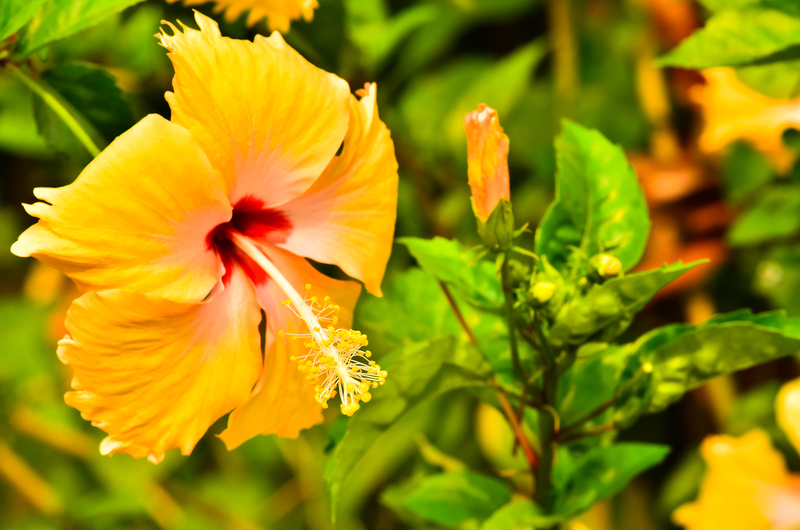Buddleia: Delightful Blooms or Garden Menace?
Posted on 01/02/2025
Buddleia, often known as Butterfly Bush, is renowned for its attractive, fragrant blooms that lure in numerous pollinators, most notably butterflies. A popular choice for gardeners seeking to add a splash of color and biodiversity to their green spaces, Buddleia's allure is, however, not without its drawbacks. As an initially well-intentioned ornamental plant, its propensity for rampant growth and invasiveness has called into question its suitability in various ecosystems.
Origins and Characteristics of Buddleia
Originating chiefly from Asia, Africa, and America, Buddleia is part of the Scrophulariaceae family. With over 140 species, this plant family thrives in diverse environments. The most commonly cultivated species, Buddleia davidii, hails from China and was first introduced to the West in the 19th century.
Characterized by its arching branches laden with conical clusters of small, tubular flowers, Buddleia provides a vibrant palette of colors ranging from deep purples to pure whites. Its leaves are generally lance-shaped and come in various shades of green, often with a silvery underside. With the ability to grow up to 15 feet in height and laced with an unmistakable sweet fragrance, Buddleia stakes a bold claim both in domestic gardens and wild landscapes.

The Appeal: Why Gardeners Love Buddleia
Buddleia appeals to gardeners for several compelling reasons:
1. Attracting Wildlife: The nectar-rich flowers are magnets for butterflies, bees, and hummingbirds. Buddleia cultivates a mini ecosystem, supporting pollinator species essential for the propagation of many flowering plants.
2. Aesthetic Value: Its dramatic flower spikes and long blooming period, from summer into fall, create a continuous splash of color.
3. Hardiness: Buddleia is a resilient plant that requires minimal maintenance. It can thrive in various soil types and withstand periods of drought, making it ideal for gardeners without a green thumb.
4. Rapid Growth: Its fast growth rate can quickly fill in gaps, providing a lush, verdant backdrop or a screen for privacy.
Environmental Concerns: The Invasive Nature of Buddleia
Despite its benefits, Buddleia has earned a notorious reputation in many regions due to its propensity to spread aggressively. Here are some key concerns:
1. Seed Dispersal: Buddleia produces a copious amount of seeds that are easily dispersed by wind and water. This allows the plant to colonize large areas rapidly.
2. Competition with Native Plants: In regions like the Pacific Northwest of the United States and parts of Europe, Buddleia has been identified as an invasive species. It can outcompete native vegetation, reducing biodiversity and altering habitats.
3. Management Challenges: Once established, Buddleia is difficult to eradicate. Its resilient root system and ability to regenerate from cut stems make it a challenging weed to control.
4. Environmental Impact: In riparian zones, where Buddleia often proliferates, it can lead to bank destabilization and erosion, further impacting local ecosystems.
Regulation and Control Measures
Due to its invasive tendencies, several regions have implemented control measures and regulations regarding Buddleia cultivation:
1. Legal Status: In parts of the United States, such as Oregon and Washington, Buddleia is classified as a noxious weed, and its sale and distribution are regulated. Similar restrictions are in place in parts of the UK and New Zealand.
2. Management Practices: Horticulturalists and environmental agencies recommend several control measures, including:
- Mechanical Control: Regular pruning and removal of flower heads before seed set can help reduce spread. Mechanical removal of entire plants, including root systems, is often necessary.
- Chemical Control: Targeted herbicide applications can be effective but must be used cautiously to avoid non-target impacts.
- Biological Control: Research into natural predators or diseases that specifically affect Buddleia is ongoing, as these could offer sustainable control options.

Balancing Benefits and Drawbacks
For gardeners enamored with Buddleia but wary of its invasive potential, mitigation strategies and alternatives are available:
1. Sterile Varieties: Breeders have developed sterile cultivars that do not produce viable seeds, reducing the risk of spread. Varieties such as Buddleia 'Blue Chip' and Buddleia 'Purple Haze' offer the same aesthetic appeal without the ecological risks.
2. Native Alternatives: Depending on the region, native plant species can provide similar benefits. For example, in the USA, options like Ceanothus and Clethra alnifolia are recommended for attracting pollinators without the associated invasion risks.
3. Responsible Gardening: Awareness and proactive management can mitigate potential negative impacts. Gardeners should research and comply with local regulations and engage in regular maintenance to prevent spread.
Conclusion: A Plant of Paradox
Buddleia represents a fascinating dichotomy in the gardening world. On one hand, it offers undeniable beauty and ecological benefits, attracting a diverse array of pollinators and requiring minimal care. On the other, its invasive nature poses significant environmental threats, necessitating careful consideration and management.
The key to enjoying Buddleia while protecting local ecosystems lies in informed choices and responsible gardening practices. By opting for sterile cultivars or native alternatives and adhering to local regulations, gardeners can revel in the delightful blooms of Buddleia without contributing to its status as a garden menace. Through a balanced approach, the enchanting presence of Buddleia can be harmoniously integrated into our gardens, celebrating its charm while safeguarding ecological integrity.












